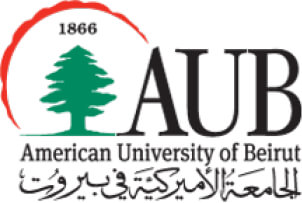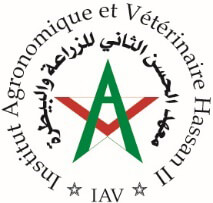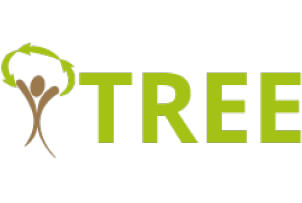





 Olive residues turn to bio-char for water filtration
Olive residues turn to bio-char for water filtration
 Olive mill wastewaters filtered with biochar turn to fresh water irrigation
Olive mill wastewaters filtered with biochar turn to fresh water irrigation
 Bio-char retains polyphenols and is added to ruminants feed to reduce enteric emissions
Bio-char retains polyphenols and is added to ruminants feed to reduce enteric emissions

SURFOLY is an innovative and sustainable business model for olive mills, feed manufacturers and farmers-breeders in the mediterranean area.

SURFOLY core concept lies in the production of biochar from olive residues and in the use of this biochar to filter olive mills wastewaters.

SURFOLY uses polyphenols enriched biochar as an additive to ruminants feed for animal wellbeing and reduced enteric emissions.

SURFOLY produces wealth for the mediterranean communities minimizing the environmental impact in the circular economy.
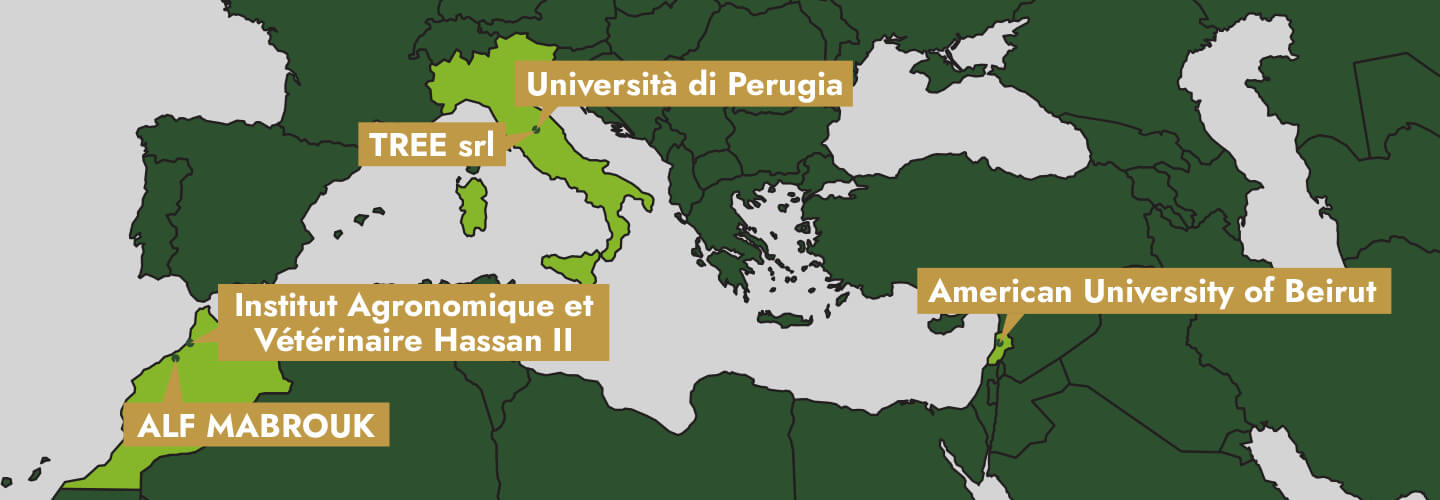
COORDINATOR
DIPARTIMENTO DI INGEGNERIA – UNIVERSITA’ DI PERUGIA Sustainable Energy Systems Laboratory (SESLAB)
The Sustainable Energy Systems Laboratory (SESLAB) of the Engineering Department of the University of Perugia is an interdepartmental research and development laboratory active in the search for new sustainable technological and management solutions for the circular economy.
Through numerical simulation, design, prototyping and experimentation, SESLAB collaborates with companies and public and private bodies in optimizing energy systems, industrial processes and business models in terms of sustainability, with particular reference to the agro-industry.
The activities related to food quality and technology will be carried out in collaboration with the Department of
Agricultural, Food and Environmental Sciences which has relevant expertise on the study of minor components (especially phenolic compounds and volatiles) of olives and their derivatives and on the valorization of agri-food industry by-products for animal feeding (evaluation of meat and milk modifications) and recovery of bioactive compounds (evaluation of their potential applications in the food industry).








WHAT IS SURFOLY
SUstainable Ruminants Feed with OLive pomace and polYphenols enriched charred olive stone
SURFOLY promotes and demonstrates an innovative business and sustainable development model in the circular economy to produce two innovative animal feeds for lactating and fattening small ruminants (sheeps and goats) while supporting mix crop-livestock system and the olive industry in the Mediterranean area. The new feed contains olive oil by-products (pomace, stone and polyphenols from wastewaters) utilised in an innovative way to improve performance and product quality and reduce the overall environmental impact on the life cycle of the combined system olive mill - feed manufacturer - farm.
Pomace from olive mills is either centrifuged to separate the olive stone (three phases process) or dryed (two phase process). Olive stone or dried pomace are then pyrolyzed in an innovative regenerative rotary kiln to obtain bio-char which is used to reduce the COD (Chemical Oxygen Demand) of olive mill wastewaters by absorbing polyphenols, hence reducing significantly the polluting impact of their use as a fertilizer or disposal. The polyphenols enriched char has antioxidant potential and can reduce methane emissions from ruminants therefore it is added to dried pomace (from three phases or two phases) to produce a nutrient mix which is eventually pelletised and used as ingredient in the new formula for sheep and goats. To further increase the mix crop-livestock model introduced by SURFOLY, when small ruminants are allowed to graze in olive orchards, digested biochar is released back as a carbon sink in the fields.
While main ideas and concepts in SURFOLY are not new, their olistic integration in a sustainable business model for farmers and the olive mill and feed manufacturing industries, with net positive environmental benefits for the MENA region, is groundbreaking.
THE PROJECT
Our main goal
The aim of SURFOLY is to demonstrate the feasibility of alternative feed resources, specifically residues of the olive industry, hence a Mediterranean agricultural production, to be used in feeding ruminants in the same area, namely sheeps and goats. SURFOLY will evaluate the impact of using this alternative feed on animal productivity, well being, and on the quality of the resulting products (meat, milk). It will also optimize the overall environmental impact on the life cycle of the production and use of the innovative feed and the socio-economic consequences for the all the actors in the circular economy, with a specific target in promoting the adoption of the new feed by farmers. SURFOLY builds a sustainable livestock production system thanks to the contribution of all stakeholders (farmers, consumers and regulators).
Our Objective
Work
Packages
Discover more about Surfoly technology and business model.

WP 1: Char production and characterization
Food standard bio-char is produced from olive residues, both from two phase processes (pomace) or three phase processes (stone), with near zero energy requirements, with and without a low cost activation of the char. In both cases the olive pomace will be dried at the mill before performing the pyrolysis tests resulting in a dry source of carbon (mainly in form of lignin). The operation will be carried with a rented mobile unit to measure the heat requirement while in the SURFOLY concept waste heat from the pyrolyzer will be used. Activities are carried out at lab and pilot scale.

WP 2: Pomace production and polyphenols absorption in char
Biochar will be used to absorb and retain polyphenols from olive mill wastewaters, hence reducing their polluting content. The most efficient method identified, from a scientific and economical point of view, will be used to produce new feeds at pilot scale.

WP 3: Innovative Feed Production
The polyphenols in char will be available for small ruminants as an additive with pomace in a palatable innovative feed. The basic objective of the preparation of animal feed is to grant a good balance in the energy, protein and micromineral requirements.

WP 4: Testing of new feeds on animals
The new feeds will be tested on a year long campaign on sheep: 4 farms at 40 animals per farm, in 2 olive producing area of Morocco, i.e. Tadla, and Elkalaa, with in addition to 40 animals at the IAV experimental farm and laboratories. Feed will be shipped to Lebanon for tests on goats: 40 animals at AUB experimental farm Bekaa valley and laboratories in Beirut campus and 160 animals from different herds in the olive Bekaa region in Lebanon.

WP 5: Mix crop-livestock system
The mix olive-goat and olive-sheep models for the MENA region will be designed, built and run. Through SURFOLY, we aim at testing the efficiency and evaluating the sustainability of existing mixed crop-livestock systems – mixed sheep and goats and rainfed olives mixed systems more specifically, in Lebanon and Morocco, on the economic, environmental and social, with the objective of up-scaling results geographically to other countries with scare feed resources and where these systems are present.

WP 6: Technical, economical and environmental optimization
The overall behaviour of the integrated model will be monitored to evaluate the technical-economical-environmental performance.

WP 7: Exploitation Dissemination Communication
It consists of actions for dissemination, communications and exploitation of project results. The replication of the model in different socio-economic and resilience scenarios will be laid by involving key stakeholders and end users.

WP 8: Management
Management activities besides project coordination, reporting and official communications, it includes also monitoring of progress of activity, risk and data management and quality control.
FROM OUR BLOG
Recent Posts
 December 04, 2023
December 04, 2023
Surfoly's at COP28: Navigating the Water-Food-Energy Nexus
Surfoly, our innovative project committed to addressing core issues at the Water-Food-Energy Nexus in the Mediterranean area and MENA regions, has made waves at COP28 in Dubai, UAE...
Read More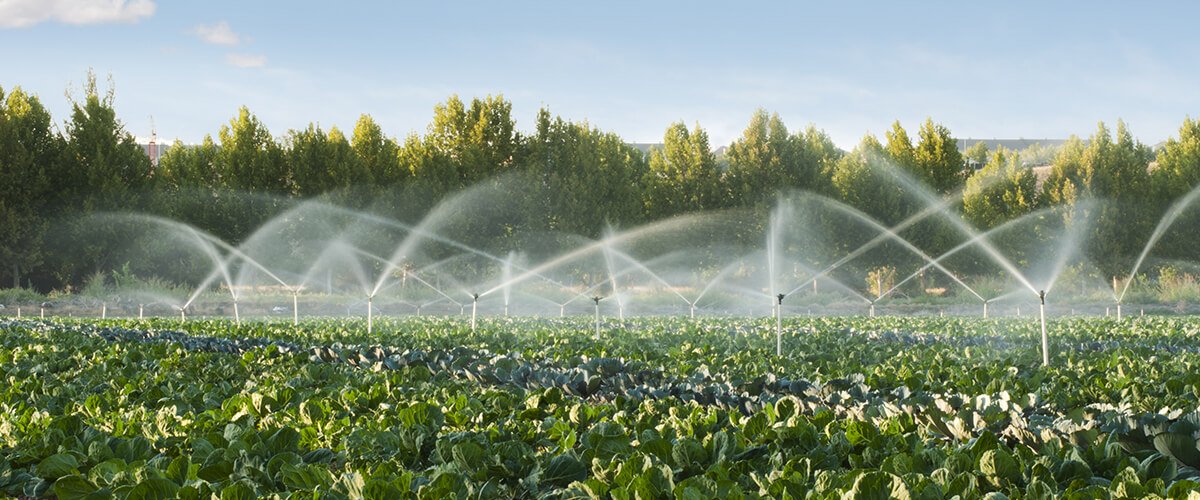 November 23, 2023
November 23, 2023
What is Surfoly?
Surfoly stands for "Sustainable Ruminants Feed with Olive Pomace and Polyphenols Enriched Charred Olive Stone." This innovative project is more than just a mouthful – it's a game-changer...
Read MoreLet's keep in Touch
Contact us for further information about the project or for any ideas or collaborations.

